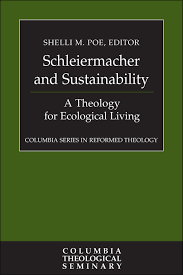Becoming Whole - A Review
A decade ago, When Helping Hurts released and began a paradigm shift in how evangelicals viewed poverty alleviation. So much of our vision of missions previously included doing work for the poor, especially in the developing world, and sending money and goods to developing nations.
The outcome of that vision, long term, has been less than helpful. In some cases, foreign aid has pushed out local commerce. The excess rice shipped from nations (like the US) with bumper crops (and often as a means for the government to prop up prices in the US market) were given or sold at a low price, often undercutting the markets for local grains. This means that aid has pushed local farmers in some developing nations out of the market and prevented them from being able to support themselves and uproots local markets that support dozens of people. The same story is true for textile donations (think the Super Bowl loser’s shirts), which have damaged the economy in several developing nations.
On balance, many of the ways that we’ve believed we were helping people through charity have been hurting them. This revelation shocked many faithful Christians who, with the best intentions, were harming more than hurting. Brian Fikkert, along with other people associated with the Chalmers Center at Covenant College, have since been trying to show how real help can be offered. Becoming Whole: Why the Opposite of Poverty Isn’t the American Dream is a recent entry in the conversation of how to help people in meaningful ways.
As the authors note in this preface, “This book provides a more systematic treatment of the underlying concepts and principles foundational to W[hen] H[elping] H[urts].” (pg 15) That is exactly the tone and content of the volume. If When Helping Hurts is the wake-up call to stop doing charity wrong, Becoming Whole is the theological basis that explains why aid does not work as a long-term response to poverty and the framework for a more positive vision for actually helping those in poverty. This is a volume that does a great deal more for building a foundation of ideas, but always with the view that the reader can take many of the ideas explained in the book and begin to apply them carefully on their own.
Summary
The bulk of this book is a plea for readers to understand an communicate a better story. The opposite of poverty is not consumption. The opposite of poverty is flourishing in a biblical framework. There is no question that having money and other resources are essential in alleviating the worst symptoms of human suffering, but an excess of such resources do not ensure a greater degree of happiness. For Fikkert and Kapic, true flourishing is found in living out the storyline of the gospel. As they summarize the message of the book: “there is a better life than the one you are currently living, a life of greater flourishing for both you and for people who are materially poor.” (pg. 15)
Part One of this volume calls readers to seek a new, better story; one framed around the gospel of Christ. It then argues for the primacy of human relationships, particularly loving ones, in human flourishing, and laying out a picture of how the focus of individuals and cultures shapes them.
In Part Two, the authors take on two false stories that continue to dog the steps of many Christians (even theologically conservative ones) in the majority world: (1) The trap of consumption and viewing consumption as a pathway to flourishing, and (2) the gnostic and pseudo-gnostic worldviews that undermine the value of the body and the eternal significance of physical aid. These errors drive a lot of the dis-ease in the pews of American evangelical churches and also frame much of the errant attempts at charity in and around the local church.
Part Three offers unpacks a biblical theology of human flourishing, which is mixed with insights about common American attitudes to poverty. This section is relevant to the conversations that go on in many of our Sunday Schools, around our potlucks, and in our homes. There is nothing new theologically in this section, but Kapic and Fikkert have presented it in a way that makes biblical theology obviously valuable to the reader.
Conclusion
Becoming Whole is an excellent tool to get people inside the local church to rethink poverty alleviation and, en route to that reconsideration, to think about the value structures in their own lives. I have read dozens of books on poverty and the American dream in my studies of wealth and poverty, environmental ethics, and the like. I did not want to put this book down. Each page offered new ways of explaining Christian theology in a way that is relevant to people in a dominant culture that is both gnostic and excessively materialistic.
This is volume that, along with When Helping Hearts and Practicing the King’s Economy, ministry leaders should read as they seek to form people and outline a vision for human flourishing among their own congregants and in the world around them.
NOTE: I received a gratis copy of this volume with no expectation of a positive review.
















Reading your Bible is a battle. There’s a reason why Paul lists Scripture as the sword of the Spirit in his discussion of the armor of God (Eph. 6:17). More even than that, Scripture reveals God’s character and is, thus, central to worshiping well (Psalm 119). That’s why reading the Bible is a battle.